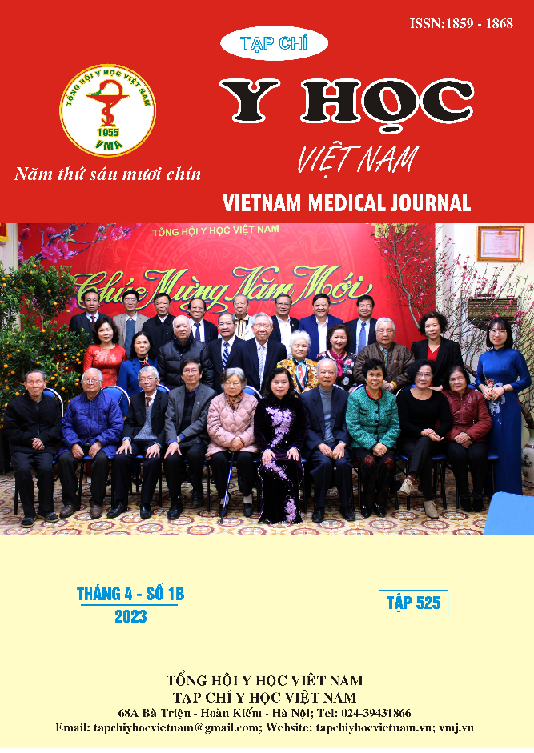RESEARCH ON EFFECT OF GYMNEMA SYLVESTRE ON GLUCOSE HBA1C AND LIPID PROFILES IN TYPE 2 PRE-DIABETES
Main Article Content
Abstract
Objectives: The study aimed to evaluate the effects of Gymnema Sylvestre on glucose, HbA1c, lipids profiles, blood pressure, and liver and kidney function in pre-diabetes. Methods: 90 adult pre-diabetic subjects were selected from the community; they were divided into two groups, The Gymnema Sylvestre-used group, and a control group, followed up for three months. Results: Gymnema Sylvestre-used group has the effect of lowering fasting blood glucose, 2 hours glucose, and HbA1c; the difference is statistically significant compared with the control group; the proportion of pre-diabetic subjects reverse back normal blood sugar accounted for 74.5%, higher than the control group; the difference was statistically significant compared with the control group; It reduces cholesterol and LDL_c, statistical significance compared to the control group; reduction in both systolic and diastolic blood pressure was statistically significant. Conclusion: Gymnema Sylvestre has the effect of reducing blood glucose, HbA1c, pre-diabetes rate, and Cholesterol, LDL-C, and Triglyceride in the pre-diabetes.
Article Details
Keywords
Pre-diabetes; spoon string; reduce blood lipids; glucose
References
2. Hà Thị Tâm, Đỗ Minh Thìn (2005), Mối liên quan giữa độ ngưng tập tiểu cầu với một số yếu tố nguy cơ ở bệnh nhân đái tháo đường típ 2 có thiếu máu cơ tim cục bộ, Tạp chí Nội tiết và các Rối loạn chuyển hoá số 12.2005, tr.32-35.
3. American Diabetes Association (2010), “Standards of Medical Care in Diabetes—2010”, Diabetes Care, Vol. 33, Suppl. 1, pp: S11-S61.
4. Dennis L. Kasper et al (1991), Harrison’s principle of internal medicine, OVID, 16th Edition, subject 323.
5. Abdul-Ghani, M. A., Tripathy, D., & DeFronzo, R. A. (2006). Contributions of β-cell dysfunction and insulin resistance to the pathogenesis of impaired glucose tolerance and impaired fasting glucose. Diabetes care, 29(5), 1130-1139.
6. Ferrannini, E., Gastaldelli, A., & Iozzo, P. (2011). Pathophysiology of prediabetes. Medical Clinics, 95(2), 327-339.
7. Tiwari, P., Mishra, B. N., & Sangwan, N. S. (2014). Phytochemical and Pharmacological Properties of Gymnema sylvestre: An Important Medicinal Plant. BioMed Research International, 2014.
8. Kanetkar, P., Singhal, R., & Kamat, M. (2007). Gymnema sylvestre: A Memoir. Journal of Clinical Biochemistry and Nutrition, 41(2), 77-81.


